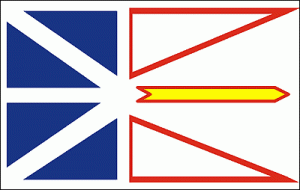Newfoundland and Labrador
Pray:
- Pray for the Aglow groups and leaders to be strengthened.
- Pray for all the resources and creativity needed to fulfill the intentions of God in the province of Newfoundland and Labrador.
- Pray for the Aglow prayer group in the Capital city.
- Pray for godly government leaders. Blessed is the nation whose God is The Lord, the people whom He has chosen for His own inheritance. Psalm 33:12
Proclaim:
- Arise, shine; for your light has come! And the glory of the LORD is risen upon you. For behold, the darkness shall cover the earth, and deep darkness the people; but the LORD will arise over you, and His glory will be seen upon you. Isaiah 60:1,2 (NKJV)
- Lift up your heads, O you gates! Lift up, you everlasting doors! And the King of glory shall come in. Who is this King of glory? The Lord of hosts, He is he King of glory. Psalm 24:9-10 (NKJV)
Interesting Facts About Newfoundland and Labrador
Government: There are 48 seats in the Newfoundland and Labrador parliament (one for each riding). After a general election, the Lieutenant Governor asks the leader of the party with the most elected members to become Premier and form a government. At least once every five years, Newfoundland and Labrador hold a general election.
During an election campaign, all parties normally run candidates in each of the province’s 48 constituencies. The candidate getting the most votes becomes the Member of Provincial Parliament (MPP) and represents the riding’s residents in the Provincial Legislature. Newfoundland has 6 appointed Senators and 7 Members of Parliament.
People: By the 1930s, more than 95 per cent of Newfoundland’s people were native born, the descendants of the English and Irish settlers of 100 years before. The pattern of settlement was mainly determined by the fishing industry, a population distribution that has persisted to this day.
The Avalon Peninsula and northeastern Newfoundland, the traditional base for the fisheries, continue to be the most heavily populated areas. In the early 1800s, disease and conflicts with settlers reduced the Beothuk Indians to extinction. There were, and still are, a relatively large number of Inuit concentrated in the coastal communities of northern Labrador.
History: The central region of the island of Newfoundland was once the home of the now extinct Beothuk Indians. The first Europeans to visit Newfoundland were Norsemen, who arrived in the late 10th century. (The Norse settlement at l’Anse aux Meadows was the world’s first cultural discovery location to receive recognition as a UNESCO World Heritage Site.) Other early visitors included the Basques, Portuguese, Spanish, British and French. In the 16th century and earlier they staged fishing expeditions into the new founde lande.
In 1497, the Italian seafarer Giovanni Caboto (John Cabot) landed on the island on June 24, 1497, on the feast of St. John the Baptist. Cabot called the new land “St. John’s Isle” in honour of the saint and claimed it for Henry VII of England, his employer.
Warfare between the British and the French shaped the history of Newfoundland during the 1600s and 1700s. In 1662 France established a fort and colony at Placentia. The Treaty of Utrecht in 1713 reconfirmed British sovereignty over Newfoundland and the fishing banks.
At the end of the eighteenth century the Newfoundland-based fishery grew in importance and the population increased. The vast majority of the immigrants came from the west country of England, and southeastern Ireland. After 1840, immigration slowed to a mere trickle: the great waves of European emigrants who crossed the Atlantic later in the century by-passed Newfoundland almost completely on their way to the United States and Canada.
For centuries Newfoundland was isolated physically and politically from its closest neighbours in Canada and the United States. Internally, most of its population was spread widely around a rugged coastline in small outport settlements, many of them isolated for long periods by winter ice or bad weather. These conditions had an effect on the culture and gave Newfoundland and Labrador a wide variety of distinctive customs, stories, songs, beliefs and dialects of spoken English. At the same time, similarities of background and the cod fishery made for similarities of social structure and practice.
The growing colony achieved representative government in 1832 and became internally self-governing in 1855. Governments began in the late nineteenth century to try to bring about economic diversification. In spite of such efforts, however, the cod fishery remained the mainstay of hundreds of outport communities.
The flow of migration nearly stopped in the middle of the nineteenth century. The population of Newfoundland continued to grow by natural increase. After serving independently in the First and Second World Wars the people of Newfoundland made the decision to join Canada in 1949. Since that time the province has grown into a more cosmopolitan community. With the collapse of the fish stocks in the late twentieth century diversification of the provincial economy, particularly the exploitation of gas resources in the surrounding sea has become increasingly important to the growth and development of the province.
Interesting Facts information from the library.educationworld.net/canadafacts website. Read more about Newfoundland and Labrador


